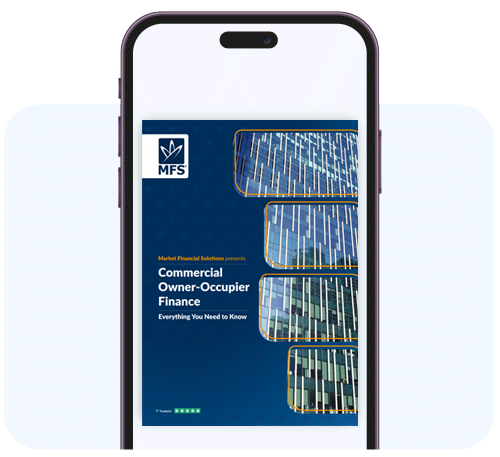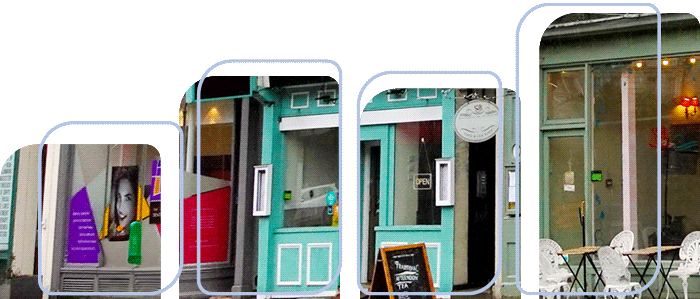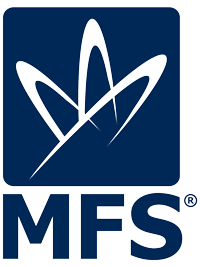The Complete Guide
- 18-page guide about commercial owner-occupier finance
- Advantages & finance options
- Challenges & how to overcome them
- Expert insights & market trends
- Free & easy-to-use finance tools
Get your free Guide below.

Funding Your Future: Your Guide to Commercial Owner-Occupier Borrowing
Those seeking commercial owner-occupier finance will likely be very different to those looking to make a commercial rental purchase. A commercial landlord may solely be concerned with receiving their rent from the underlying tenant. Whereas owner-occupiers will be much more involved with whatever sector they’re operating in.
This can bring with it unique considerations and challenges, however. On top of their standard property investment concerns, owner-occupiers may need to think more broadly about the business environment.
This guide will go through all this and more. We will break down how commercial owner-occupier borrowing works in practice, what borrowers need to know, and why the market is relatively unique.

What is Owner-Occupied Commercial Real Estate?
Before we move onto the details, we had better start with a definition of owner-occupied commercial real estate. In a nutshell, commercial owner-occupier real estate is property that a borrower will own to use as the premise of their business. An owner-occupied commercial mortgage is a type of loan designed specifically to allow borrowers (individuals, or companies) to purchase a property that their business will occupy.
To compare: a “standard” commercial BTL investor may purchase a property to rent out to an external business, and have no say or interest in the running of that business. They simply collect the rent. Whereas an owner-occupier investor will purchase a property to use for their own business, and allow it to grow.
It’s hard to get an exact figure for how many commercial properties in the UK are owner-occupied. But we can get a rough estimate by doing some calculations. According to the Property Industry Alliance’s 2023 Property Data Report[1], around 55% of the UK’s commercial property was rented rather than owner-occupied in 2020 (the last year for which an estimate is available).
By mid-2022, there were approximately 2.14 million commercial properties spread across England and Wales, according to the government’s figures[2]. So, very roughly, there could have been around 963,000 owner-occupier commercial properties across the UK in 2022, and this figure may be much higher today.

Reasons to Get an Owner-Occupied Commercial Mortgage
Commercial owner-occupier finance, specifically mortgages, can allow property investors to expand their portfolios with this asset type. They can allow borrowers to own the property they want to operate from, which gives them the freedom to make changes as they see fit, rather than seeking a landlord’s permission.
Owning the property may also bring with it tax benefits. Certain expenses related to owning and maintaining the property can be tax deductible, and this includes mortgage interest.
By taking out an owner-occupied commercial mortgage, a borrower will also be able to understand how their monthly costs will look for a certain amount of time until they need to refinance. This could be preferable to renting from a commercial landlord who may be tempted to raise the rent regularly.

Property Types for Commercial Owner-Occupied Finance
Technically, any commercial property can be an owner-occupied asset. It’s not the property type that makes it owner-occupied, but rather how it’s utilised.
The sector the purchaser operates in determines what kind of owner-occupied property would be suitable. So, for instance, a catering company may invest in largescale, industrial kitchens. It may also expand into restaurants.
A mechanic is likely to invest in garages, while a hairdresser would purchase a salon. Then of course, there are the commercial properties that can be utilised by all kinds of businesses and sectors.
For instance, most businesses will require office space in some capacity. Manufacturers of any product will likely need to invest in warehousing etc.

Benefits of Owner-Occupied Commercial Real Estate
We have already covered some of the benefits of owner-occupied commercial real estate, such as freedom to operate, and tax benefits. But there are many other advantages to owning owner-occupied commercial property.
To start with, over the long term, commercial property values can rise. This means an owner can increase the net worth of their business with their property, while operating out of it at the same time. Two perks in one.
Owner-occupiers will have the freedom to benefit from any spare space they may have, too. If there is excess space, owners can lease out those parts or use them for ancillary services, creating more opportunities for income generation. Broadly, many of the perks that come with owner-occupied commercial property revolve around the freedom that comes with the purchase.

Challenges of Getting Commercial Owner-Occupier Finance
As is the case with any type of mortgage or lending product, there may be certain challenges that need to be accounted for. For starters, the costs involved may be particularly high. On top of the interest and repayments, borrowers will likely need to cover arrangement fees, broker fees, valuation fees, and legal fees.
Also, lenders will generally consider commercial mortgages, including commercial owner-occupier finance, more risky than residential loans. As such, the terms involved may be rigid and costly.
The products themselves may also not be accessible to many. Newcomers and start-ups may struggle to attain the funding they need to expand. Firms with less than a year of trading behind them could find it difficult to secure commercial owner-occupier finance as some mainstream lenders may not feel they have sufficient experience to provide a stable basis of income for calculations.
Lastly, a borrower’s personal circumstances may add to the challenges. If a borrower has a poor credit history, missed payments in their record, or other issues – they may face limited finance options.
Types of Commercial Owner-Occupier Finance
Fortunately, there are many types of commercial owner-occupier finance available for borrowers. First and foremost, there are high street commercial mortgages.
Mainstream lenders may be able to provide commercial mortgages to purchase owner-occupier properties, capital raise against them, or refinance. Some may also be able to help with refurbishing owner-occupied properties, or investing in machinery, vehicles, and other equipment.
For those who may need flexibility and speed with their commercial property owner-occupier loans, specialist finance could be better suited. One option could be bridging loans, bespoke loans tailored to suit the needs of property investors. Another one could be bespoke BTL mortgages which are also available.
There are also alternative financing options that may prove useful. Crowdfunding, peer-to-peer lending, or even family loans can be explored. What’s important to remember is that no matter what financing option borrowers opt for, they need to ensure it matches their circumstances.

Interest Rates
Commercial owner-occupier finance is affected by interest rates just as much as other lending products are. While each lender will have its own criteria and preferences, there are a few key elements that can affect the rates borrowers are offered.
From the borrower’s perspective, certain issues in their background could raise the interest rates available to them. If they have limited experience in the commercial market, for instance, lenders may apply more rigid criteria and costlier terms. Also, missed payments, CCJs, and other issues in one’s background may limit accessibility to lower rates.
On a broader perspective, how the Bank of England[3] votes on the base rate will affect how lenders position their products. Also, those who want to try and keep on top of how interest rates are moving in the commercial market will need to monitor swap rates[4]. These are the rates at which lenders exchange fixed interest payments for variable ones, in an effort to manage long-term borrowing risks[5].
Swap rates tend to move in line with expected changes to the bank rate, meaning anticipated reductions are ‘priced in’ before any official BoE cut. If swap rates rise, mortgages and other property loans tend to follow. The same is true in the opposite direction.

Interest Only vs. Repayment
Generally, where borrowers opt to move forward with an owner-occupied commercial mortgage, they have two main payment options available. There is interest only, and repayment.
With an interest only mortgage, the borrower only pays the interest due each month, while the capital is paid at the end of the term[6]. This will reduce monthly repayments, and provide greater control over the investment(s). Although, covering the capital at the end of the term may prove challenging for many borrowers.
A repayment mortgage, sometimes known as a capital repayment mortgage, sees the repayments split into two. One part of the repayments will go towards the original loan, while the other covers the interest[7]. Here, the loan will be chipped away at throughout the term and by the end of it, the borrower will not have to deal with any more repayments.
This allows borrowers to pay less interest overall in comparison to interest only, and some lenders may offer lower interest rates down the line if the borrower keeps up with their repayments. But, the monthly repayments are likely to be more expensive with a repayment mortgage than an interest only option.
As always, the right option will depend on the borrower’s circumstances and preferences.
How to Maximise Your Loan Amount
There are a few general things borrowers can do to try and raise their commercial property owner-occupier loan amounts. If possible, borrowers can increase their deposit size. Typically, the more money a borrower puts into a mortgage, the more a lender will be willing to lend.
Other common efforts that can raise loan amounts include looking at longer terms, reducing the borrower’s debt levels, and boosting the interest coverage ratio (ICR).
On the latter, Market Financial Solutions has many ICR tools at its disposal to boost loan size, and help with affordability. We can roll interest, defer interest, and utilise top slicing. Of course, the right route forward will depend on the borrower’s circumstances, and our underwriters will work closely with our borrowers to determine what’s best for them.

The Role of a Commercial Mortgage Broker
A mortgage broker, or advisor, is a professional who searches the mortgage market for the best deals for their client’s (borrower’s) needs[8]. In the specialist market specifically, working with a mortgage broker can allow borrowers to access a wider range of lenders that wouldn’t be on their radar otherwise.
Generally, working with brokers could also save borrowers time and money. Brokers can provide expert guidance on what’s right for their clients, and may be able to negotiate the terms involved on their behalf.
However, brokers will levy fees for these services, and borrowers surrender a certain amount of control once they hand over a case to an advisor. Also, while brokers will have access to a wide range of products, they may only be able to work with a limited number of lenders. It is up to the borrower to determine whether working with a broker is right for them.
Who Can Apply?
Each and every lender will have its own preferences and criteria for commercial owner-occupier finance. Broadly, most lenders will likely at least work with individuals, limited companies, and LLPs. For owner-occupier mortgages, it’s likely the self-employed, sole traders, and/or partnerships will also be applying.
With commercial owner-occupier borrowing, investors may opt to apply as a company, as opposed to an individual. This may bring with it certain tax advantages[9].
At Market Financial Solutions, all our applicants are assessed on their individual merits, and every case has its own dedicated underwriter. We can work with a broad range of applicants. Get in touch to discuss the details with our team.
How to Apply
Again, individual lenders will have their own processes, but to get the ball rolling on any commercial owner-occupier finance application, borrowers or brokers will need to contact the lender involved. Most lenders will be able to be contacted on their website, over the phone, or via email.
From here, their internal processes will dictate how the application progresses. But, there are a few common elements that will probably be a part of every application across the market. All lenders will require documentation from their applicants. They’re likely to need specific documents relating to the underlying business. This could include invoices, balance sheets, profit/loss statements etc.
Borrowers who are not on top of this kind of paperwork may risk slowing down the application process. Indeed, affordability assessments for commercial owner-occupier finance are likely to be based on company accounts more so than the individual applying on behalf of the business[10]. Specifically, lenders may assess the company’s debt servicing cover (DSCR), which looks at the net income before interest, tax and dividends (EBITDA), and the nature of the business itself.
There are a few things borrowers can do to help speed up the application process. In addition to keeping on top of their documentation, borrowers can ensure they’re working with the right broker for their circumstances, choose their solicitors carefully, and embrace communication with their lender throughout.

Market Insights for Commercial Properties
- “Retail occupier market: Retail sales volumes rose by more than expected in January at 1.7%, up from (a downwardly revised) -0.6% in December. Food store sales volumes rose by 5.6%, the strongest rise since March 2020, following four consecutive monthly falls.” (Carter Jonas)
- “Occasional WFH is here to stay, but we now have enough evidence to show that its impact on the demand for office space has been significantly less than some expected. For example, in central London, the current level of requirements is 23% higher than average, with 54% of companies looking for more space than they currently occupy.” (Savills)
- “The logistics and supply chain sectors are primary drivers of industrial property demand. The rise of e-commerce has intensified the need for strategically located warehouses to facilitate efficient distribution. In 2024, occupiers took up 9.3 million sq ft of industrial and logistics floorspace in Q3 alone, bringing the total take-up for the year to 26.6 million sq ft.” (Property Wire)
- “With commercial property investment growing in the final quarter of 2024 by 28% year-on-year, the investment hotspots have been revealed. According to Alan Boswell Group, investment levels saw the biggest rise since mid-2021.” (Alan Boswell Group)

Useful Tools: Commercial Calculators
Investing in owner-occupier commercial property can be complicated and costly. There are various fees involved, and an investor’s individual circumstances can sway the rates and terms involved.
To help with this, our commercial loan calculators can allow users to factor in a range of different financial and commercial elements that’ll show how much our loans may cost, and if we’re the right lender for their situation.
These free, interactive tools allow users to enter several details of their investment situation, or preferences. This includes:
- An owner-occupied property value
- Any outstanding mortgage
- The loan amount
- The term length
The calculators allow users to play around with our repayment options, including fully rolled, or part serviced. As these details are entered, corresponding results will be updated in real time. These will show:
- How much the monthly payments could cost
- The applicable LTV
- The gross and net loan amount
The results are calculated estimations, however. So, for exact figures, borrowers should get in contact with our team.

Real World Scenarios
Case scenario 1
Investing in commercial property in an effort to revitalise a local high street is a commendable endeavour. But an owner-occupied business such as a restaurant can be hard to get off the ground. As such, our owner-occupier Bridge Fusion product could be of particular use here.
Bridge Fusion allows for a longer term to be taken on lower interest rates, potentially saving thousands of pounds in interest. This is crucial for an entrepreneur who’s trying to make a new business venture a success.
Our Bridge Fusion loans have terms of 24 months, but this may not be enough to allow a new restaurant to make a name for itself in a local market. But, perhaps its fortunes could be on the verge of turning. Say the underlying borrower is close to hitting a new milestone which would draw in customers.
Still, the broker involved may be concerned that it’s still not a great time to refinance as they approach the end of the initial term. To help, we (at our discretion) can offer a 12-month extension on the loan. This would allow the borrower more time to grow their business and hopefully allow the borrower to secure better terms down the line.

Case scenario 2
Tenants can make or break any property investment plan. Landlords may be dependent on the income they provide, and so will need to secure them as soon as possible. Without renters in place, some lenders may not even be willing to work with would-be borrowers.
This could prove especially stressful for property investors who have multiple facets to their holdings. Owner-occupier mixed-use properties can be difficult to refinance for some investors. A property may contain an owner-occupied café, with a residential flat sitting above it.
Property investors with this kind of asset could turn to us for refinancing capital to repay first charge lenders, and spruce up an asset to enhance its desirability. The residential and commercial parts of the property may not be in sync. The café may be generating plenty of profit. But the flat could be empty, and the investor may struggle to secure tenants for it.
Ideally, the borrower’s primary exit strategy may involve moving onto long-term finance once they have secured tenants. But they’ll often be happy to sell their asset to cover our funding if needed.
In this kind of case, where it’s obvious that finding an external lender may prove challenging or delay things, we’d look to include a contingency that the property would be put on the market for sale if tenants or long-term finance hadn’t been secured by a certain date.
This does two things. It ensures we’re able to deliver our funding comfortably, and protects the borrower from long-term costly repercussions. To help this plan along, we’d utilise our internal tools and resources to either confirm interest from an external lender, or gather evidence that the borrower would have options for a sale.

Case scenario 3
An owner-occupied care home would likely prove tricky to underwrite for many lenders. This kind of commercial investment and setup would require a lot of due diligence. From a lending perspective, we’d really have to make sure everything is lined up perfectly before we can progress.
Much of this would depend on the exit strategy which, for care homes, could be hard to formalise given what we’ve seen in recent years. A typical care home property investor may not have particularly good accounts, most likely due to Covid-19 related difficulties. We’d be able to accommodate this, but we’d want to see evidenced back up exit strategies at the ready.
We could also take steps to make this case more palatable in other areas, such as lending against the bricks and mortar value of the property. If we were to also take into account the trading value, the LTV on this kind of deal could be quite low, which would make us more comfortable with the deal.
As for the exit options, this kind of property could present a number of options to counterbalance the risk involved. There are the usual refinance or sale options, but these properties also have unique, useful features.
These sites can include multiple plots of unused land. If a borrower plans to work with developers to sell or utilise this land, that would make a great exit strategy for our loan, for example.

Why Work with Market Financial Solutions?
At Market Financial Solutions, we have nearly 20 years’ worth of bespoke lending experience behind us. This allows us to be able to respond to all commercial owner-occupier finance queries within four hours. What’s more, all of our deals are underwritten from day one by a dedicated underwriter.
This underwriter will do all the heavy lifting on behalf of the broker and borrower. What’s more, we will always do what we can to deliver funding, rather than find excuses not to.
Across our products, we have a range of tools at our disposal to support property investors – from first-time landlords through to fix-and-flip strategists. For brokers who want to know exactly where they stand with their commercial property owner-occupier loan applications at all times, we’re only a phone call away.
Conclusion
Commercial owner-occupier real estate can bring with it additional work or challenges that a “standard” commercial BTL investment may not. A commercial BTL landlord may solely need to concern themselves with the financials of their investment. Whereas commercial owner-occupiers will need to add sector-specific issues to this.
Hopefully, this guide has illuminated what’s important to understand about this corner of the market, and shared insight on how specialist finance can help.
Should brokers and/or borrowers want to discuss loan requirements further, Market Financial Solutions can be contacted via numerous means. We can be called on +44 (0)20 7060 1234, or emailed at info@mfsuk.com. Also, we have a live chat on our website which is always manned by a member of our underwriting team, and not a chatbot. Moreover, our BDM team is spread across England and Wales, meaning brokers will be able to book in some face-to-face time with us, regardless of where they’re based.
[1] https://propertyindustryalliance.org/wp-content/uploads/2024/02/pia-2023-final-150124.pdf
[2] https://www.gov.uk/government/statistics/non-domestic-rating-stock-of-properties-2020?utm_source=chatgpt.com
[3] https://www.bankofengland.co.uk/
[4] https://www.mfbrokers.co.uk/resources/money-markets
[5] https://www.ftadviser.com/mortgage-rates/2024/11/14/what-swap-rates-mean-for-mortgages/
[6] https://www.moneyhelper.org.uk/en/homes/buying-a-home/mortgage-repayment-options
[7] https://www.money.co.uk/mortgages/should-you-get-an-interest-only-or-repayment-mortgage
[8] https://www.moneyhelper.org.uk/en/homes/buying-a-home/choosing-a-mortgage-shop-around-or-get-advice
[9] https://www.telegraph.co.uk/money/property/buy-to-let/buy-to-lets-britain-biggest-business-landlords-offset-tax/
[10] https://www.revolutionbrokers.co.uk/second-charge-mortgage-brokers/owner-occupied
Disclaimer
Market Financial Solutions are a bridging loan and buy-to-let mortgage provider, not financial advisors. Therefore, Investors are encouraged to seek professional advice. The information in this content is correct at time of writing.
